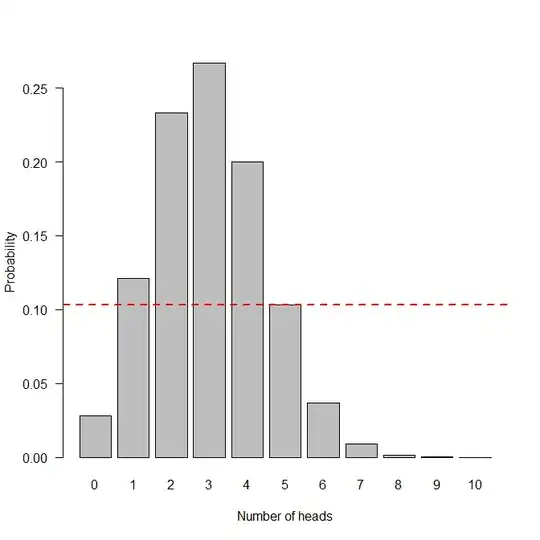In hypothesis testing, the definition of p value is the probability of obtaining test results at least as extreme as the results actually observed, under the assumption that the null hypothesis is correct.
Now, my understanding of what "extreme" means is based on @whuber's answer at What is the meaning of p values and t values in statistical tests?. They state that "more extreme" values refer to x values at which the likelihood ratio (the ratio of the likelihood under the null to the likelihood under the alternative) at x is greater than the likelihood ratio at the particular value observed for the test statistic.
For one sided hypothesis tests, this definition of "extreme" makes sense to me. However, I am still unsure how to find "more extreme" values when considering two sided tests. Let me use an example to illustrate.
Suppose we are tossing a coin 10 times, and suppose the probability of getting a heads on any toss is p. Let $H_0: p=0.3$ and $H_1: p\ne 0.3$. Suppose that our test statistic is the total number of heads, which should follow a Binomial (10,0.3) distribution under the null hypothesis. Suppose that we observe 5 heads. I can see why when calculating the p value, we would need to include the probabilities of obtaining at least 5 heads, since the likelihood ratio at x=5,6,7,...,10 are all greater than or equal to the likelihood ratio at 5.
Now, I am told by those around me that x=0 and x=1 are also considered at least as extreme as x=5. So here's my question: why are the values x=0 and 1 considered as extreme as 5? I can't seem to use the likelihood ratio definition for "extreme values" to make sense of why 0 and 1 are considered as extreme as 5. Any help would be appreciated. If you don't want to use @whuber's definition of extreme, that's fine, but please do state your definition of extreme.
